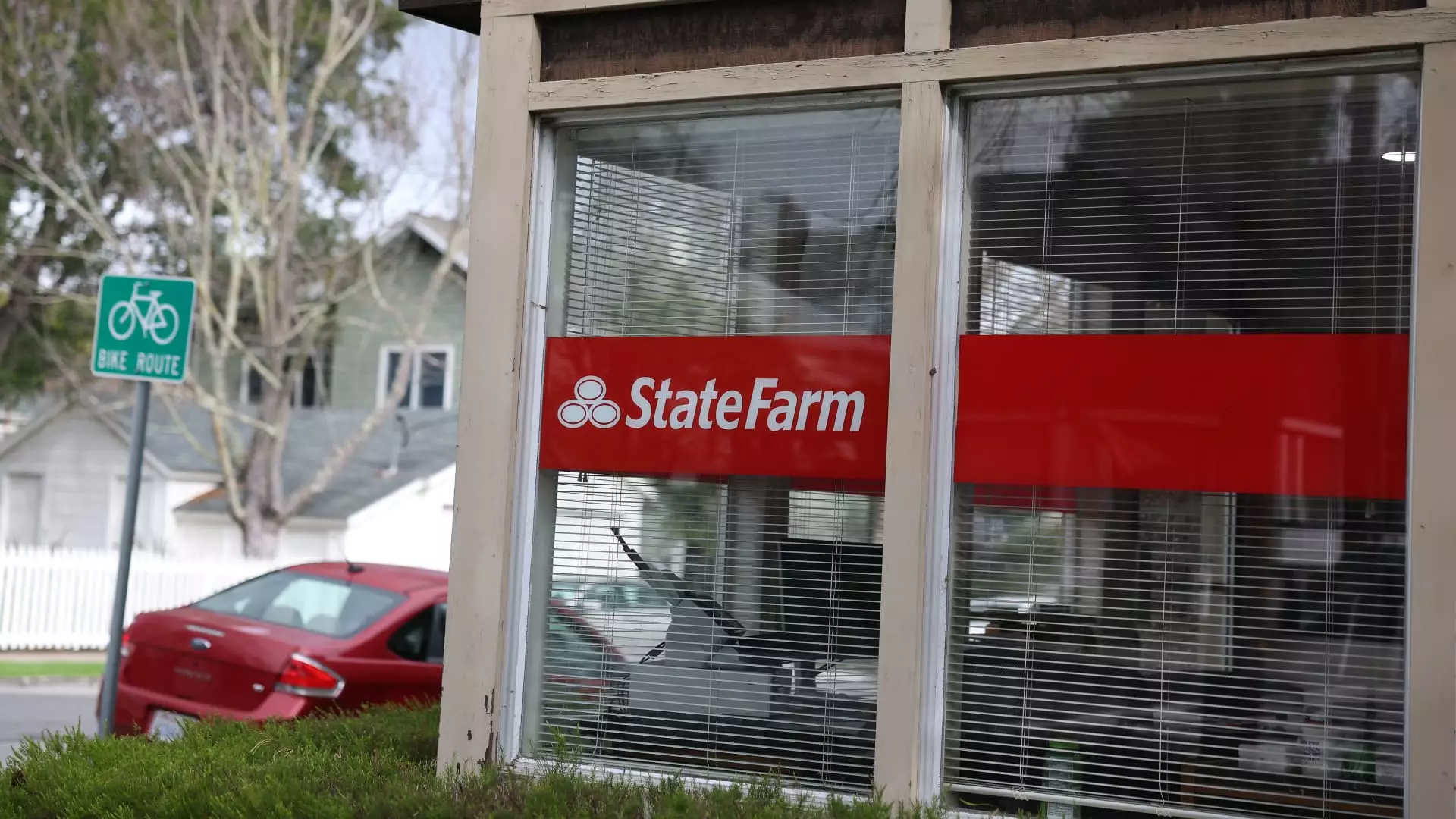In a critical showdown in Oakland, State Farm is attempting to secure an emergency rate hike that could drastically alter the landscape of homeowners’ insurance in California. The situation has escalated to the point where an attorney for the state Department of Insurance likened it to the Titanic charging toward an iceberg. While there may still be “time to turn the ship,” the implications of this rate hike, if approved, raise significant questions about the health of the state’s insurance industry and the very lives of millions of California homeowners.
State Farm is no small player—it commands nearly 20% of California’s homeowners market, with a hefty portfolio of close to three million active policies. However, the recent devastation brought on by historic wildfires has shaken the insurer to its core, prompting a desperation that has led to the call for a 17% rate increase after previously seeking 22%. This predicament is revealing not just about State Farm but also the broader systemic issues within the California insurance market.
The Firestorm of Financial Strain
The wildfires that swept across Los Angeles in January were disastrous, with estimated damages ranging from a staggering $250 billion to $275 billion. For State Farm, this translates to over $2.75 billion already paid out on claims related to the fires—a burden that severely threatens its financial stability. The dire reality is that the insurance company is drowning, trying to find lifelines in a terrain dominated by weather-related atrocities. Despite the necessity of the rate increase, one cannot help but wonder if the insurer is using this catastrophe as an opportunity to inflate premiums and hedge against future liabilities.
What’s alarming is the stark reality presented by economist David Appel during the ongoing hearings—that California’s insurance market is on an unsustainable path, having declined dramatically. This raises a fundamental question: how much longer will insurance companies exist in California before they squeeze homeowners out of the market entirely? Homeowners are not just facing rising premiums but also the possibility of losing access to reliable coverage altogether.
Blocked Pathways and Political Nuances
Political maneuvers by state officials further complicate an already precarious situation. Insurance Commissioner Ricardo Lara’s hesitations about approving significant rate hikes stem from a desire to protect consumers. Still, with insurance companies regularly paying out more claims than they collect in premiums, one has to consider whether protecting homeowners is making the situation worse in the long run. The approval process for rate hikes is riddled with bureaucratic hurdles that only serve to further immobilize insurers and prevent timely adjustments in response to emerging financial realities.
Consumer advocacy groups like Consumer Watchdog are vehemently against the rate increase, arguing that State Farm has failed to justify its request. The conflicting figures presented by the company only heighten skepticism about its credibility. They first asked for a 22% rate increase, and now they’re saying a 17% hike is more reasonable. This inconsistency raises alarms about whether these appeals are born out of necessity or a calculated strategy to maximize profits at the expense of everyday Californians.
The RISK of a Broken Safety Net
The implications of State Farm’s requests extend far beyond their immediate financial needs; they suggest an impending crisis for homeowners across the state. If State Farm were to withdraw or limit its services further—something it has already begun doing by halting new policies—California residents may find themselves at the mercy of an untested state-run program known as the FAIR Plan. This “insurer of last resort” has seen an astronomical increase in clientele as homeowners gravitate towards what they perceive as a safer alternative, yet it lacks the capacity to adequately cover the burgeoning need.
Janet Ruiz from the Insurance Information Institute offers a glimmer of hope with the “Sustainable Insurance Strategy” proposed by the state, which aims to provide a framework for insurers to recalibrate their rates based on catastrophic modeling and reinsurance costs. Yet, will this be enough to stabilize a system that seems to be crumbling under the weight of climate change and bureaucratic inertia?
The fear remains palpable: as the cost of living soars in California, it becomes increasingly difficult for average residents to secure reliable and affordable insurance. They are caught in a whirlwind of rising premiums, flashing red warnings from insurers, and the potential loss of their safety net should corporations decide that California’s market is no longer worth the risk.
The surrounding political and economic landscape suggests that this is merely the tip of the iceberg. With every hearing and every rate increase request, the question looms larger: will California homeowners sink or swim?

